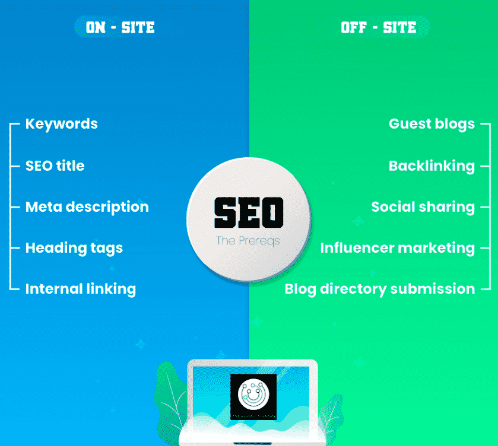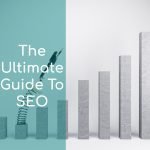It’s 2023 and the hype around Search Engine Optimization has only gained more momentum. The cutthroat competition has compelled businesses, be it a clothing brand, food chain, or even a freelancing platform, to give SEO basics a thought.
Even people who have no idea how Search Engine Optimization works, are somewhat aware of its types and a few things about it.
This is a series of articles intended to make you clear-headed about the nuances in SEO. We will start with absolute basics and delve in the intricacies in later articles.
So for the beginners, let’s just understand what on-site and off-site SEO is first.

On-Site SEO
Whenever somebody is talking about SEO, we can safely say that the majority of the times it is the on-site SEO they are talking about. On-site SEO comprises of every kind of optimization that is done on the website, hence the name.
The on-site optimization includes website optimization that is primarily concerned with the title of the content, keyword distribution, meta description, and suffice to say, the general structure of the website. The SEO basics tell how each and every component needs to be in perfect harmony in order for the site to improve its ranking in the SERP.
Keywords Rule On-Site SEO
Once you get the hang of the keywords, the remaining comes pretty easy. On-site SEO is all about the keywords.
You need to invest a good deal of your time in looking for the right keywords and then identifying which ones can be used on which page and how. Note that this is a crucial process and ought to be given due importance.
Not only are you supposed to look for high search volume keywords but shortlist the ones with less competition so that the focus keyword of your article does not have a lot of competition. The lesser the competition, the higher the chance of the article to get ranked on the said keyword.
Many SEO tools (paid versions) allow you to add more than one keyword/keyphrase. Now that you have more than one keyword, your article or web page has a higher chance of securing a good ranking in search engine. These paid tools are very reasonable and offer yearly packages with different budgets.
Moreover, the distribution of these keywords has to be in perfect balance. Normally a 500-word content requires a keyword to be mentioned twice or thrice in it. SEO tools such as Yoast provides a detailed analysis report once you fetch in your content. Title and meta descriptions need to incorporate the focus keyword as well.
Off-Site SEO
To put it simply, optimization done outside of the website is termed as off-site SEO. The most important game-changer in this regard is social media.
In a world where all of us are hooked to our phones because of social media, capitalizing on it seems only fair. Majority of the customer base of a plethora of brands is online. In order to increase your outreach, having a social media presence is a prerequisite.
The Power Of Social Media
Every site has social media integration in it. The social icons on a site allow visitors to keep in touch with the company through social platforms. These social platforms keep them posted about the updates and new offers by the said brand. Because let’s face it, visitors are more eager to use social media to connect to a brand rather than a website (unless it is an online shopping forum. of course).
A social profile also builds trust among your visitors/potential customers. For the SEO basics, you need to have at least Facebook and Instagram (if visual content seals the deal for you) profiles set up.
Backlinking
One of the most important off-site SEO basics includes backlinks. Backlinking or inbound linking includes sites sourcing your site on theirs. Having backlinks on your site sort of authenticates the content that you are providing.
Imagine a site quoting a line from your article and citing your site as a source; amazing, right? This is why backlinks are important. For that to happen, you need to come up with content that is shareable.
If the content is engaging and an interesting read for the audience, only then will it get organic backlinks.
Also, getting backlinks from well-established websites implies that their traffic can be directed to your website if the viewers click on your website’s link on their platform. This sounds great for SEO purposes. The cherry on top, Google credits sites with more backlinks. But beware of the bad backlinks.
Guest posting is another way of increasing traffic on your website.
Summing Up
From what we have gathered so far is that a successful SEO strategy is a perfect blend of both the types. If you still have not given a thought to working on the off-site SEO, now is the time to come up with an effective strategy for it.
Know your audience for both and you will do just fine.
Until next time!
Discover more from The Digital Cauldron
Subscribe to get the latest posts sent to your email.





